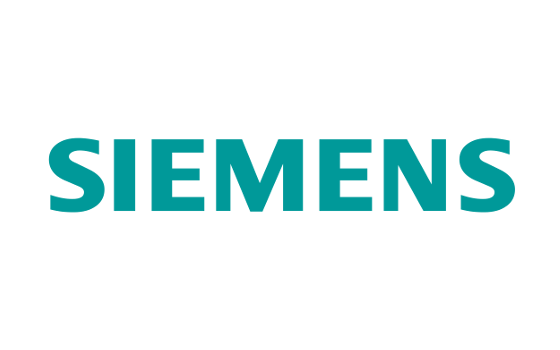 Siemens Healthineers and KinetiCor present at the 26th Annual Meeting of the International Society for Magnetic Resonance in Medicine (ISMRM) in Paris (June 16 - 21, 2018) the joint results of their strategic agreement to co-develop technologies for patient monitoring and correction of patient motion in MRI exams. The strategic collaboration of both companies involves the joint development of an MRI in-bore camera system to expand precision medicine. The Kinetic Sensor, an integral part and one of the key features of Siemens Healthineers BioMatrix technology and of the new 1.5 Tesla MRI scanner Magnetom Sola and of the 3T Magnetom Vida system, is the first ever in-bore, real-time patient viewing system, allowing close patient monitoring and prospective motion correction for neurological MRI exams.
Siemens Healthineers and KinetiCor present at the 26th Annual Meeting of the International Society for Magnetic Resonance in Medicine (ISMRM) in Paris (June 16 - 21, 2018) the joint results of their strategic agreement to co-develop technologies for patient monitoring and correction of patient motion in MRI exams. The strategic collaboration of both companies involves the joint development of an MRI in-bore camera system to expand precision medicine. The Kinetic Sensor, an integral part and one of the key features of Siemens Healthineers BioMatrix technology and of the new 1.5 Tesla MRI scanner Magnetom Sola and of the 3T Magnetom Vida system, is the first ever in-bore, real-time patient viewing system, allowing close patient monitoring and prospective motion correction for neurological MRI exams.
A successful MRI exam requires a patient to stay still. Patient motion, however, can result in non-diagnostic exams, requiring rescans or in the worst case having to reschedule the exam. For certain patients, such as young children and adults who have trouble staying still due to pain, trauma and/or cognitive difficulties, sedation may be required for a successful MRI exam. For these reasons, patient motion is a known and costly factor in MRI. The new in-bore camera system helps to significantly reduce motion-related artifacts in MR imaging, enabling diagnostic imaging in the presence of motion, and may help reduce the need for sedation for children and adults who are less able to stay still in the MRI scanner. The sensor employs a 4-camera system which tracks every movement of the patient’s head in the scanner. The camera has an ultra-slim profile, shaped to the bore of the Magnetom Sola and Magnetom Vida MRI systems. Real-time motion information from KinetiCor's camera, used in combination with Siemens Healthineers MR pulse sequences with integrated prospective motion correction technologies, enables the imaging to continually adapt to the patient’s movements. The resulting product, the new BioMatrix Kinetic Sensor on the latest scanner generation of Siemens Healthineers, helps deliver standardized, high-quality MRI examinations that support clinical users on their way to delivering precision medicine.
Jeffrey Yu, MD, Chief Executive Officer at KinetiCor, expressed excitement about the strategic agreement with Siemens Healthineers and what this will mean for the future of MR imaging. "KinetiCor is delighted with the successful collaboration with Siemens Healthineers as one of the leading MR manufacturers. Together, we will jointly bring the first real-time patient monitoring and advanced prospective motion correction system to the market. The KinetiCor system increases diagnostic quality, is able to reduce rescans, and to improve patient comfort while improving workflow efficiency and patient throughput," he concluded.
"Working closely with our valued partners, we were once again able to demonstrate our role as a leading innovator in the field of magnetic resonance imaging," stated Dr. Christoph Zindel, Head of Magnetic Resonance Imaging at Siemens Healthineers. "We are very pleased that KinetiCor's path breaking in-bore camera and motion-correction technologies are becoming an integral part of Siemens Healthineers BioMatrix technology - allowing for automatic adaptation to each and every patient. With our BioMatrix technology our customers are able to decrease rescans and to cut healthcare costs by reducing unwarranted variations. With this, we continously expand precision medicine," said Zindel.
Hawaii Diagnostic Radiology Services, USA, is one of several sites where the Kinetic Sensor is currently employed for research purposes. According to Marshall Miyoshi, HDRS Chief Operating Officer, "the Kinetic Sensor, unlike current motion correction techniques, uses an innovative approach to track motion and correct it in real time. This produces a dramatic improvement in image quality, reducing motion artifacts and providing clearer visualization of the brain with negligible impact on MR technician workflows."
The products/features (here mentioned) are not commercially available in all countries. Due to regulatory reasons their future availability cannot be guaranteed. Further details are available from the local Siemens Healthineers organizations.
Siemens Healthineers
Siemens Healthineers enables healthcare providers worldwide to increase value by empowering them on their journey towards expanding precision medicine, transforming care delivery, improving patient experience and digitalizing healthcare. A leader in medical technology, Siemens Healthineers is constantly innovating its portfolio of products and services in its core areas of diagnostic and therapeutic imaging and in laboratory diagnostics and molecular medicine. Siemens Healthineers is also actively developing its digital health services and enterprise services.In fiscal 2017, which ended on September 30, 2017, Siemens Healthineers generated revenue of €13.8 billion and profit of €2.5 billion and has about 48,000 employees worldwide.
About KinetiCor
KinetiCor specializes in advanced motion correction technologies for MRI, enabling diagnostic quality imaging even in the face of significant patient motion. Despite continuous advances in acquisition speed in MRI, remaining still during an MRI examination remains a challenge for many patients. KinetiCor’s technology addresses this issue head-on, thereby maximizing diagnostic performance and providing razor sharp images with every single scan.